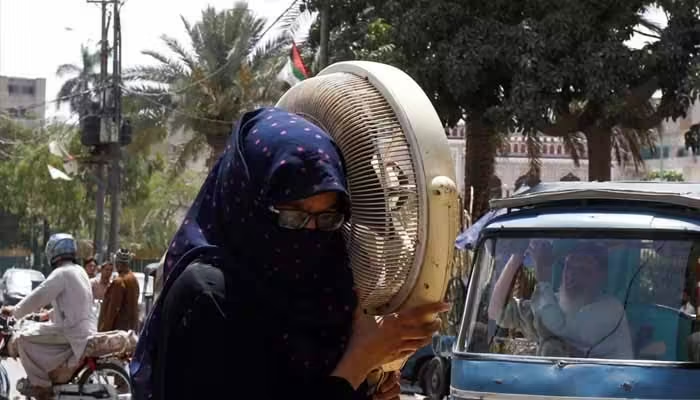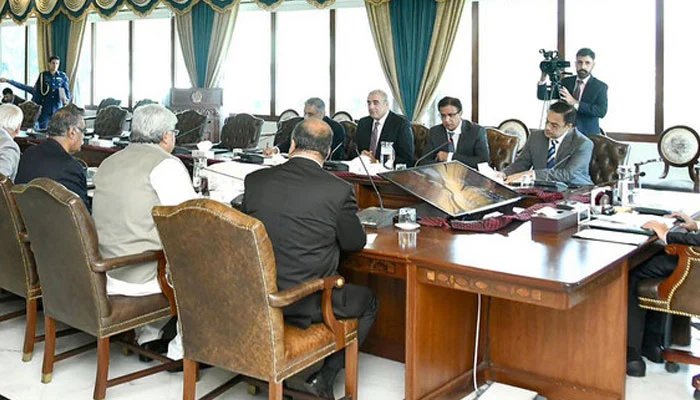Karachi, the bustling metropolis of Pakistan, is set to experience continued hot weather in the coming month, with no rain expected until mid-September. This prediction comes from the Chief Meteorologist of the Pakistan Meteorological Department (PMD), Sardar Sarfaraz, who has confirmed that the city’s residents should not anticipate any rain in the immediate future. The forecast points toward hot and dry conditions persisting through September, with the potential for heat waves in October.
According to the meteorologist, Karachi is not expected to see any significant rain activity until at least mid-September. While other areas of Sindh, particularly Tharparkar and Umarkot, might witness light rain, Karachi will likely remain dry. Sarfaraz added that the monsoon winds are gradually retreating from the Sindh region, which further diminishes the likelihood of rain in the coastal city.
Monsoon Winds in Sindh
Though Karachi is expected to stay dry, light rain is forecasted in some parts of Sindh. Tharparkar, Umarkot, and their surrounding areas may experience light showers over the next couple of days. These scattered rains are the last remnants of the monsoon season, which is expected to recede by mid-September. Once the monsoon winds withdraw, Sindh will transition into its typical dry spell, bringing hot weather conditions for most of the province, including Karachi.
Impact of the Weather on Karachi
The absence of rain in Karachi could have a significant impact on the city’s daily life and environment. With no relief from the intense heat, residents can expect temperatures to remain high throughout September. The typical monsoon rains that cool down the city have been absent this year, making the conditions particularly harsh for those who are vulnerable to the heat.
September is traditionally a warm month for Karachi, and this year is no exception. The city is likely to experience above-normal temperatures, and according to Sardar Sarfaraz, the heat may extend into October as well. He also warned that there is a possibility of heat waves in October, which could further exacerbate the discomfort for residents.
The Importance of Preparing for Heat Waves
As Karachi heads into a hot September and possibly even a hotter October, preparing for potential heat waves becomes crucial. Heat waves can have severe health impacts, especially on the elderly, children, and individuals with pre-existing medical conditions. Staying hydrated, avoiding direct exposure to the sun, and ensuring that air conditioning or cooling measures are in place will be vital for coping with the rising temperatures.
In the past, Karachi has experienced devastating heat waves, which have led to numerous health complications and even fatalities. In 2015, a severe heat wave claimed hundreds of lives in the city. Since then, authorities have worked to raise awareness about heat wave safety measures, but residents still need to be vigilant.
Wider Impact of Rain Shortages in Sindh
While Karachi may not be facing immediate problems due to the absence of rain, other areas of Sindh have been grappling with the aftermath of heavy monsoon rains earlier in the season. Several cities in Sindh, including Hyderabad and Sukkur, have seen water accumulate in low-lying areas due to insufficient drainage systems. This stagnant water has led to the spread of waterborne diseases, including gastroenteritis, diarrhea, and skin infections.
The lack of rainfall in Karachi may be a short-term relief in avoiding waterlogging and related problems, but the long-term consequences of dry spells are also concerning. Reduced rainfall can affect the water supply in the city, leading to water shortages in the future. The city already faces a water crisis, with many residents relying on tankers and private water supply systems to meet their daily needs. Prolonged dry conditions could worsen this situation, making it even harder for the city’s population to access clean and safe water.
Future Weather Projections for Karachi
Looking beyond September, weather experts predict that October may also bring hot and dry conditions to Karachi. Sardar Sarfaraz noted that heat waves are likely to occur in October, raising concerns for public health and safety. If these projections hold true, Karachiites may need to brace themselves for an extended period of discomfort.
The retreat of the monsoon winds marks the end of any hope for immediate rainfall relief. As these winds exit the region, the city’s weather patterns will return to their typical dry and hot state. This transition will likely last through October, with temperatures soaring during the daytime and only slight relief in the evenings.
How to Cope with the Upcoming Heat
In preparation for the continued hot weather, residents are advised to take necessary precautions. Staying indoors during the hottest parts of the day, wearing lightweight and light-colored clothing, and drinking plenty of water are essential steps to avoid heat-related illnesses. In the event of a heat wave, it is important to follow safety guidelines provided by local authorities, such as seeking shade, using fans or air conditioning, and checking on vulnerable individuals in the community.
The weather forecast for Karachi offers little relief from the ongoing heat, with no rain expected until at least mid-September. As monsoon winds retreat, the city will experience dry and hot conditions throughout the month, with the possibility of heat waves extending into October. Residents are urged to take precautions to stay safe during this challenging period, as authorities continue to monitor weather patterns and provide updates. The potential for prolonged hot weather highlights the importance of preparedness and vigilance as the city endures yet another scorching season.



